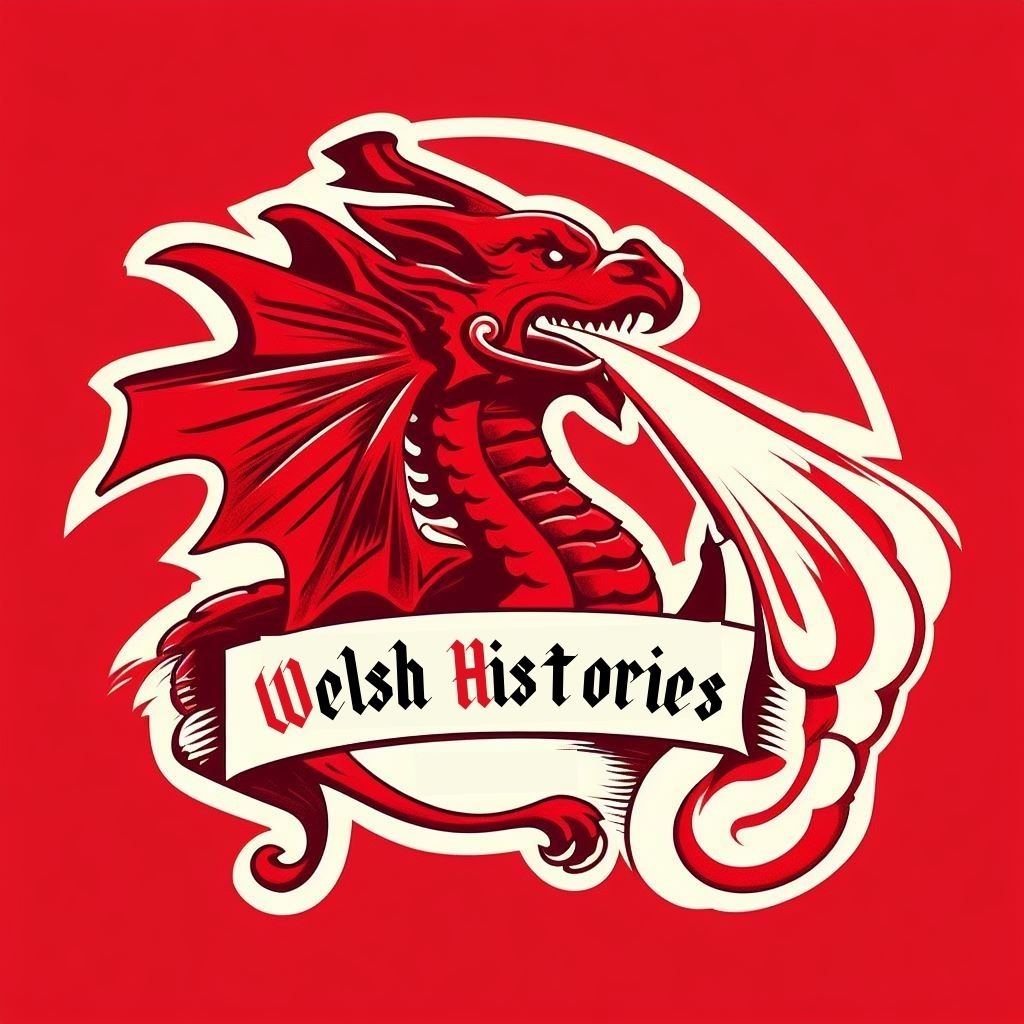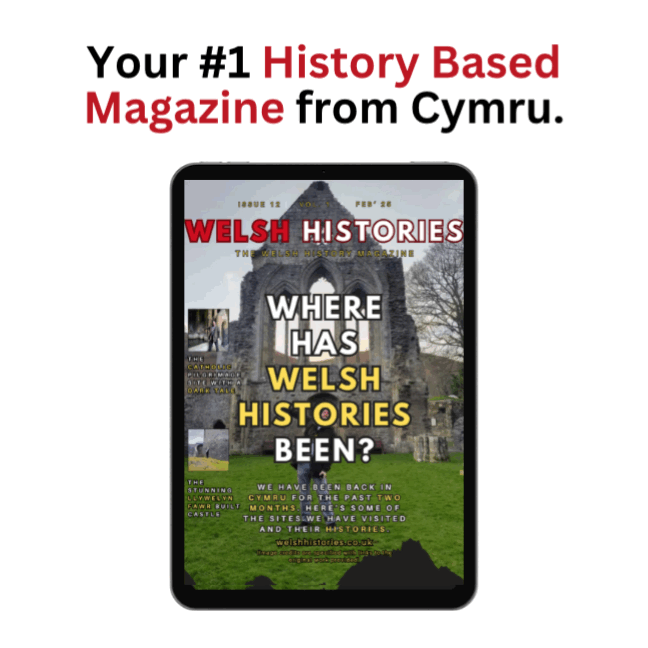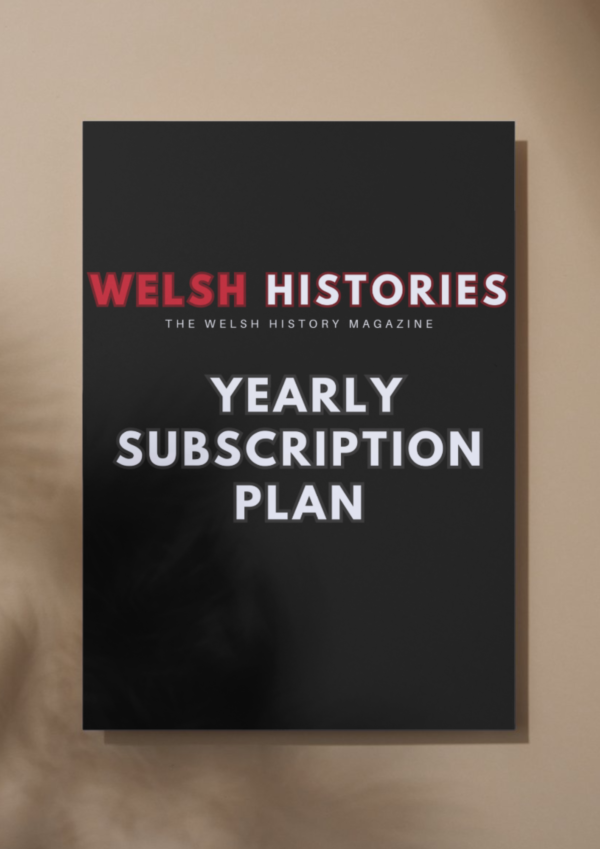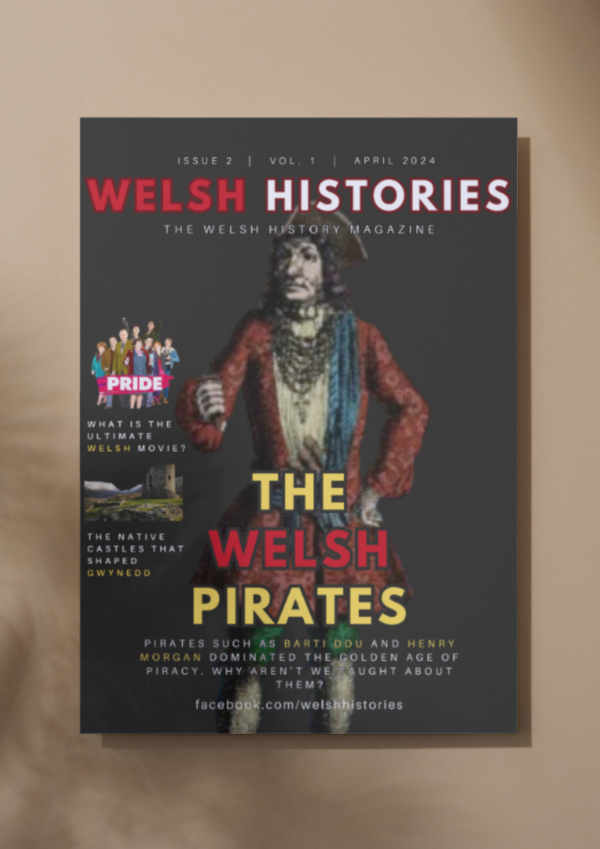Your basket is currently empty!
I Mapped Out Welsh History: Stereotypes, Celtic Language & Welsh Ancestry
—
by
When I started looking at old Welsh history maps—I noticed how they map out stereotypes, trace the survival of the Celtic language, and highlight the enduring strength of Welsh ancestry.
1.

I can’t speak much for De Cymru but in the north I do hear “ClanDidno”, “Clan Fair Feckem” and “That really long one” a lot from the English… and from some Welsh, actually. ![]()
Price commented, “I’ve been trying to learn Welsh for some time now, with some success. My one accomplishment is being able to correctly (as I was told by someone actually from Wales) pronounce the LL sound. I have had several English folks argue with me, insisting it’s clan.
After once trying to demonstrate to one of them how it’s said, I was told I didn’t know anything about it, since I’m American. Now when they tell me it’s “Clan” I just say, “Oh, okay,” and continue to pronounce it the way I was taught.”
Haikola said, “The Welsh pronunciation is quite easy actually. You just learn how to pronounce each letter, and then you can pronounce the place names.
English place names are much more difficult, because there are several ways to pronounce most letters.
I learned some Welsh when I lived in North Wales for 14 months about 40 years ago – and yes, I can still pronounce (and also spell) Llanfairpwllgwyngyllgogerychwyrndrobwllllantysiliogogogoch correctly after all these years.”
Mogford added, “Just be glad the English visit Wales and spend their money!”
#2.
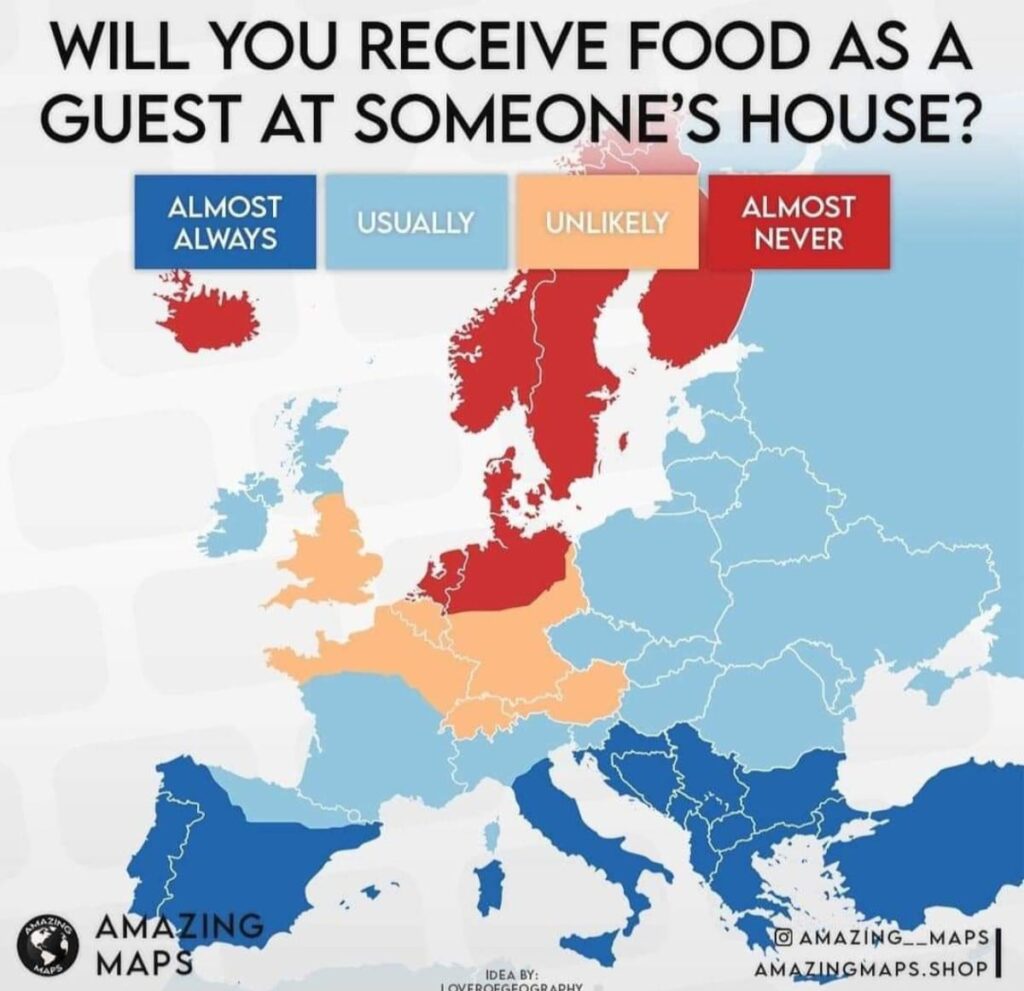
I feel as though the map creators perhaps disregarded the existence of Cymru for this one.
Whenever I am a guest at someone else’s home, I am practically forced to eat biscuits and/or lunch – occasionally at gunpoint! We are surely in the “Usually” category.
Holmes commented, “Makes sense to me in Scotland / Ireland there is sort of an unspoken rule of hospitality not sure if this is true for Wales. Being Celtic nation it would not surprise me if a similar tradition existed.”
Lawson said, “They have counted all of England and Wales as London! When we visited my aunty Gwen as a child we were briefed if she offers you a cup of tea say no. Of course we said yes please. A cup of tea meant sandwiches, fruit cake and Welsh cakes, and half the afternoon!”
Rothach added, “The Celtic nations are generally very good at hospitality….the map definitely needs updating to include Wales in the blue/dark blue…and Scotland and Ireland needs to also be the darker blue.”
#3.
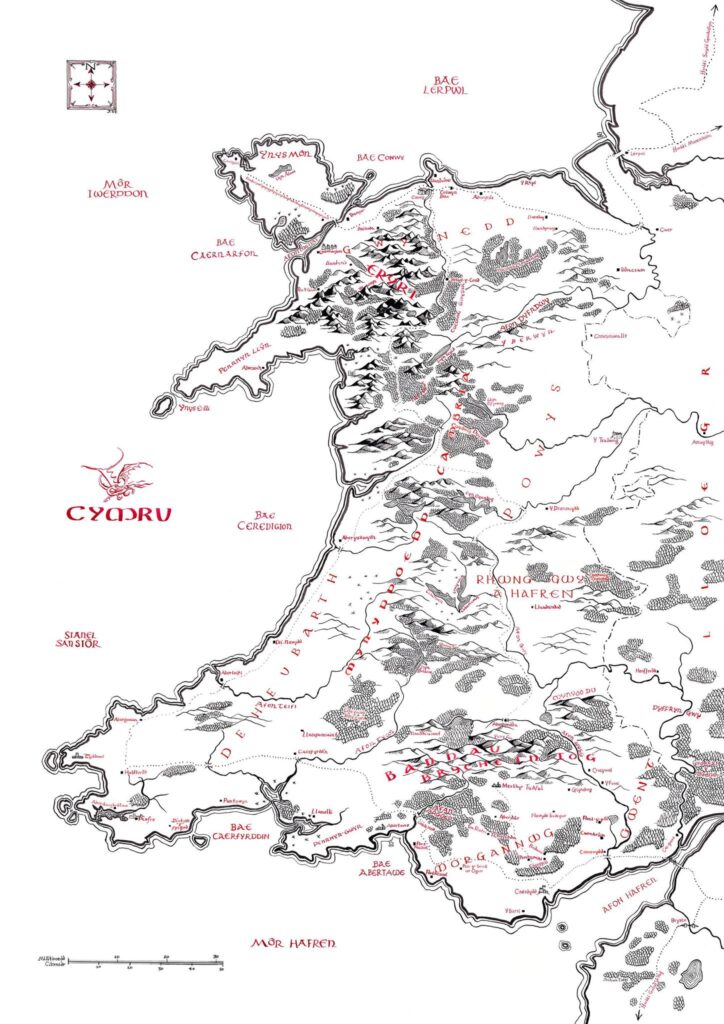
I just saw this amazing Tolkien themed map of Cymru and felt compelled to share it with you!
For those who don’t know…
J.R.R. Tolkien, the genius behind “The Hobbit” and “The Lord of the Rings,” was not only a literary mastermind but a philologist deeply connected to Cymru. His works are steeped in the influence of Welsh language, mythology, and landscapes. In his own words, he referred to Welsh as the “senior language of the men of Britain.”
Tolkien’s appreciation for the Welsh language went beyond mere admiration. He embedded Welsh linguistic elements into his fictional world. The Elvish languages of Quenya and Sindarin, which feature prominently in “The Lord of the Rings,” exhibit clear Welsh influences, both in phonetics and structure. This linguistic artistry lent authenticity to Middle-earth.
The mythological tradition of Cymru was another wellspring of inspiration. The tale of the Mabinogion, a collection of Welsh legends, offered parallels to Tolkien’s storytelling. Elements of the Mabinogion, such as the enchanted Cauldron of Rebirth, are visible in Tolkien’s works.
#4.

The first published map of Cymru came from the Welsh Renaissance cartographer, Humphrey Llwyd (1527–1568), and was published in 1573. Of course, there had been previous maps which included Cymru, but this was the first to specifically cover it.
Try and spot all the errors!
Addis commented, “It’s showing the Welsh speaking areas more than anything. Under the 1536 Act of union Shropshire, Herefordshire, Worcestershire and Gloucestershire remained under the jurisdiction of the council for Wales and the Marches as they were still Welsh in character and still largely Welsh speaking. They were governed from Ludlow Castle until 1689 when they became a full part of England. The Act of union was repealed some years back so that the Welsh assembly could legally call itself a government. None of the land taken from Wales under the Act has so far been returned.”
Lewis added, “I love that the river Severn was designated as the border and that my home town of Malvern was in Wales according to this map.”
#5.
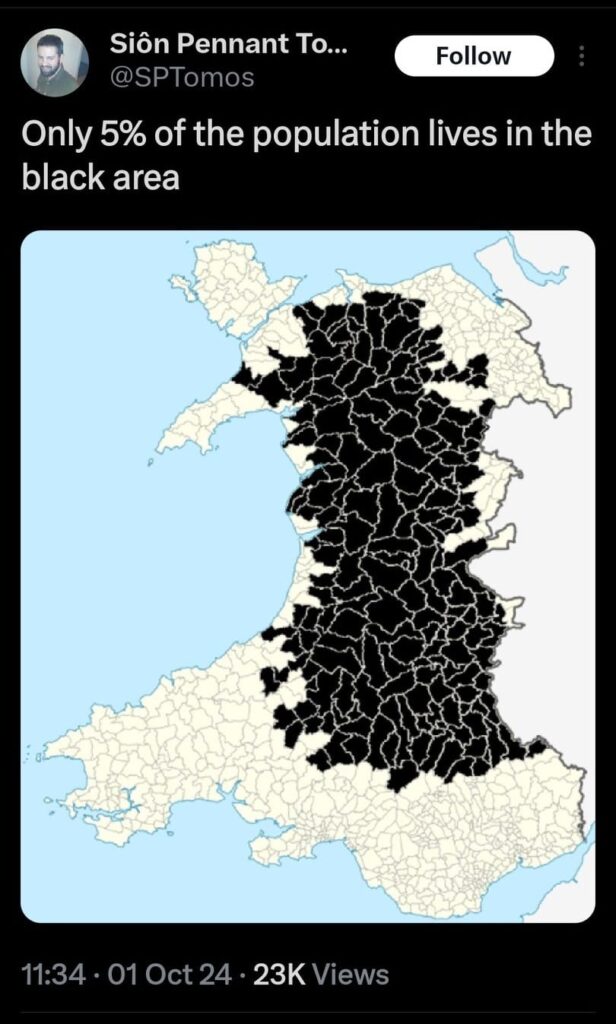
This is pretty fascinating!
Larkin laughed and said, “And that’s exactly the reason I spend most of my time in the black area!”
#6.
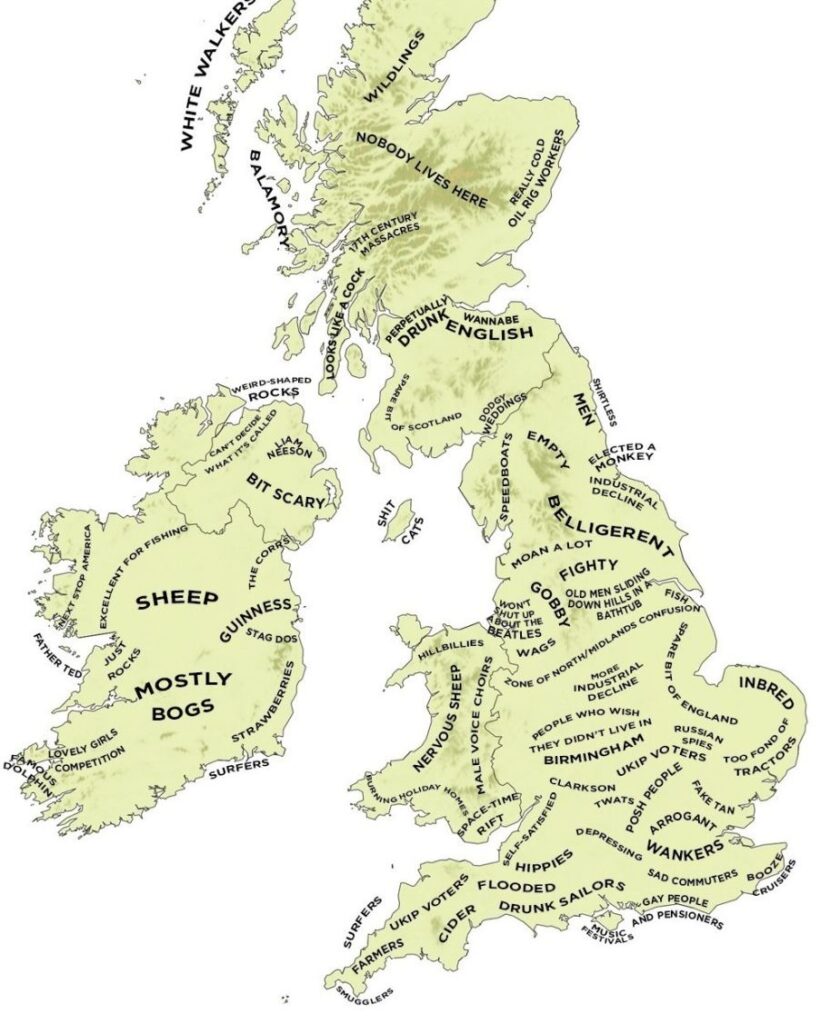
Whilst I certainly do not endorse any of these stereotypes (I object to the notion that I am a “hillbilly”), it is a pretty fun map of stereotypes that some might find interesting.
Shaw said, “This map just proves once again that Cornwall and the rest of the Southwest are the best Britain has to offer. Surfers, smugglers, and sailors drunk on cider? What else do you need?”
Virgo added, “As someone from Fenland I”m deeply offended to be called “the spare bit of England” and demand we be included in the inbred bit with North Norfolk.”
#7.

Whilst the daffodil reigns supreme as the flower most commonly associated with Cymru, we do have plenty of others, too. This flower map delves into some of the most common flowers throughout the country.
For those unaware: the daffodil became a symbol of Cymru, alongside the leek, in the 19th century. It has since become synonymous with our patron saint, Dewi Sant (hence its use on Dydd Gŵyl Dewi Sant/Saint David’s Day), and can be found at almost any large congregation of Welsh people, from rugby games to the Eisteddfod.
It is believed to have surged in popularity as a result of the only Welsh Prime Minister, David Lloyd George, who insisted on the daffodil’s use during the investiture of Edward VIII as Prince of Wales.
#8.

This image was sent into me by one of our readers, Richard, and it is a series of maps showing the decline of the Brythonic and Gaelic languages in the British isles over a period of 1600 years.
The most interesting, for me, is the map around the year 600 AD. This was a time period when Saxons, Jutes, Danes and more were coming to the islands in their hundreds and thousands. The islands very quickly went from majority Brythonic/Gaelic speaking to majority Germanic.
The map from 2000 shows why it is so important to continue with the process of promoting & preserving our native languages – whether Cymraeg, Irish Gaelic, Scottish Gaelic, Manx and Cornish.
#9.

If you have just woken up to the sound of a rooster and were wondering about the translation of “cock-a-doodle-do” throughout Europe, then here you go.
FYI: the Welsh translation is “coc-a-dwdl-dŵ”. Croeso/you’re welcome.
#10.

Here is a map of how the island of Great Britain might have looked around the year 550 AD. Those were the days!
The 550s were a turbulent time period for Britain and the native Britons – featuring dozens, if not hundreds, of battles.
One such battle took place in the year 556 AD, when King Cynric (of Wessex) fought against the Britons at the Battle of Beranburh. Beranburh is today identified as Barbury Castle (a hillfort in Wiltshire) in South West England.
Jones commented, “Conveniently called the ‘dark age’ by those wanting to keep everyone in the dark.”
#11.

You may have noticed that I almost always use Welsh place names. For example, I use “Sir Benfro” instead of “Pembrokeshire”. Whilst my posts are written (mostly) in English, I am an advocate for using conversational Cymraeg and will promote it when and wherever I can.
Here is a map which contains many of the Welsh place names throughout Cymru, so that you can join in, too!
#12.

This map shows where you are more likely to find Americans with Welsh ancestry. The darker the coch (red), the more likely you’ll find a Welsh-American!
Notice how the darkest reds are in the areas in and around Pennsylvania. As I have of course posted about many times, Pennsylvania is a US state with deeply interesting Welsh history. I trave;;ed through New Hampshire and Massachusetts last year, too, and met with many Welsh Americans.
Perhaps some of our American readers can shed light on why the states around Washington are so red? I am unfamiliar with Welsh history there!
Garvey added, “Many Welshmen and women came to the southern US also. They came much earlier though, around the 1600’s. I once had done a DNA test and it said I had a smidge of Welsh. I was completely unaware of it, and did some hard digging. Couldn’t find anything until I went farther back and found a few welsh folk on my tree who came from Glamorgan, and immigrated to Virginia in the 1600’s I believe it was. My great great grandmother’s maiden name is of Welsh origin, but I had never thought anything of it still I discovered it.
Thought it was pretty neat that little minute amount of Welsh was still detectable in me, my aunt, and my cousin after all these generations.”
Evans said, “I’m from Washington state, the very top left. Most people’s ancestors who came here came for logging work. My great grandpa was Welsh, he moved here to do logging. He would extract specific, really big trees, cutting one at a time and removing the tree with mule teams.
Some people’s family came here for fishing as well, but that’s more Oregon i think. There were also a great deal of fur trappers, including for otters, beaver, and swans.”
McClain commented, “I get why Utah has more Welsh ancestry. It’s also why Utah has more English ancestry out of any other state. Mormons. They convinced so many people to drop their lives and move to Utah and join their church.
They especially liked to convince the women back when the church first started back when polygamy was still a thing there before they legally had to ban it to become a state.
I learned this from ex Mormons who love history btw. Anyway, they basically sex trafficked a bunch of unwitting women from England and Wales. They convinced some guys too, but it was really heavy on the women. It’s kinda messed up. So glad they stopped doing that.”
McCullough said, “Columbus Junction, Iowa has a large Welsh population….for a small town anyway. We celebrate St. David’s Day every year. There is still a Welsh cemetery and church.”
#13.

These are the top suburbs for finding Australians with Welsh ancestry in eat state/territory.
I am a little bit surprised that New South Wales comes in second.
Derrick commented, “I’m sure there is more, my grandpa was welsh. Unfortunately he never got the chance to teach me the language. I grew up with welsh dragon in the house though which was always a flex haha.”
Gregory laughed, “Old saying. A Welshman will do anything for Wales except live there LOL.”
#14.

Despite the P-Celtic languages (Cymraeg, Kernewek and Brezhoneg) being quite distinct from the Q-Celtic languages (Gaeilge, Gàidhlig and Gaelg), we do share quite a similar word for “beach”. Perhaps our friends at The Gaelic Meme Machine can share a pronunciation for “tràigh”?
Also, Kernow was cruelly left off this map by its creator. The Kernewek word for beach is “treth”.
Clay commented, “Interesting that Gaelic and Welsh have developed a similar word and how different the English word is.
True story. When I first moved to Wales I thought there was one huge beach wrapping around most of N Wales, because everywhere I went I saw signs for Traeth Beach…”
More from Welsh Histories
Welsh Histories is a Welsh history celebrating platform which looks to promote all aspects of Welsh history. Though we focus predominantly on native Welsh history, we do also share the non-native aspects from time to time. You can follow us on Facebook; Instagram or Twitter for more. A reader? We also have our very own Welsh Histories Shop where we sell our Welsh Histories Magazine. Diolch yn fawr iawn and keep enjoying Welsh Histories.
Sally is a proud wife of a Welshman, editor & writer of Welsh Histories. She’s all about stories—that shout ‘anything Welsh.’ Drop her an email if you have an advice, insight, experience, or a story to share.
